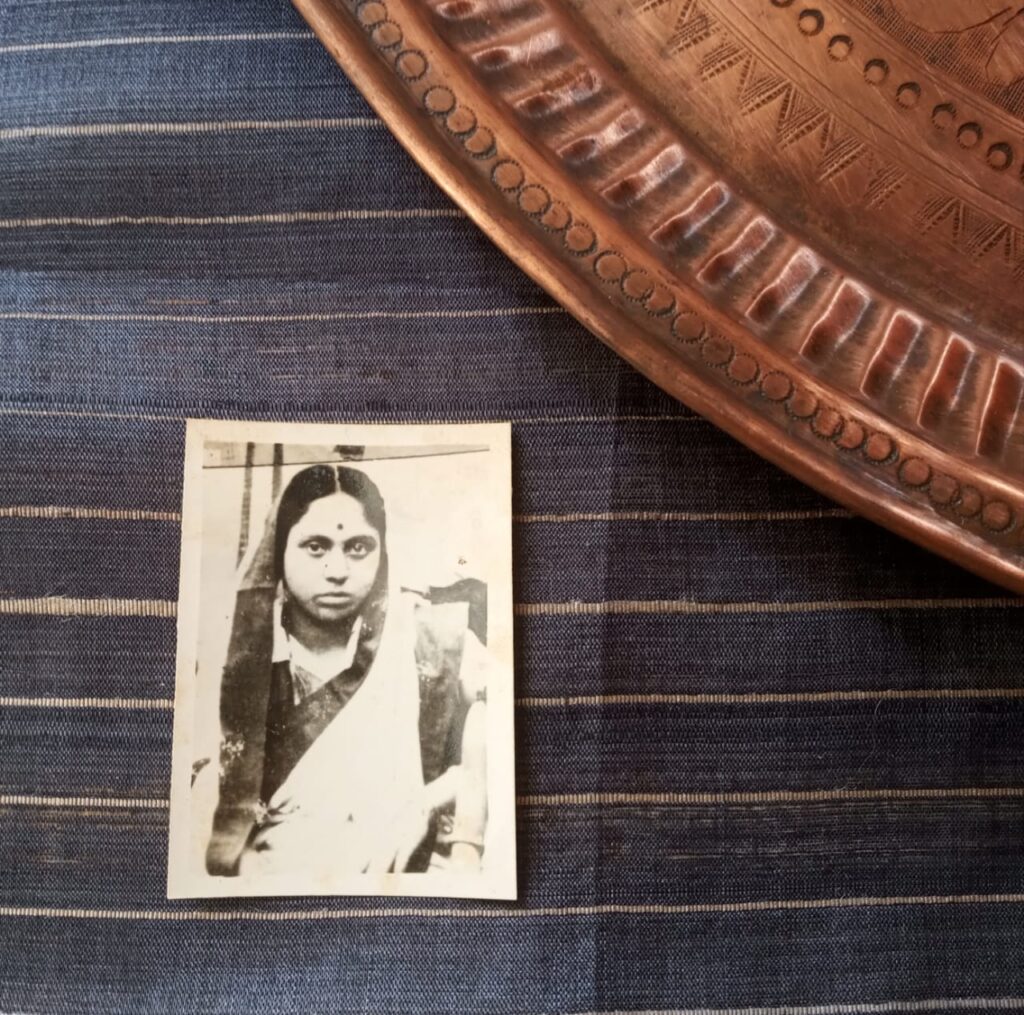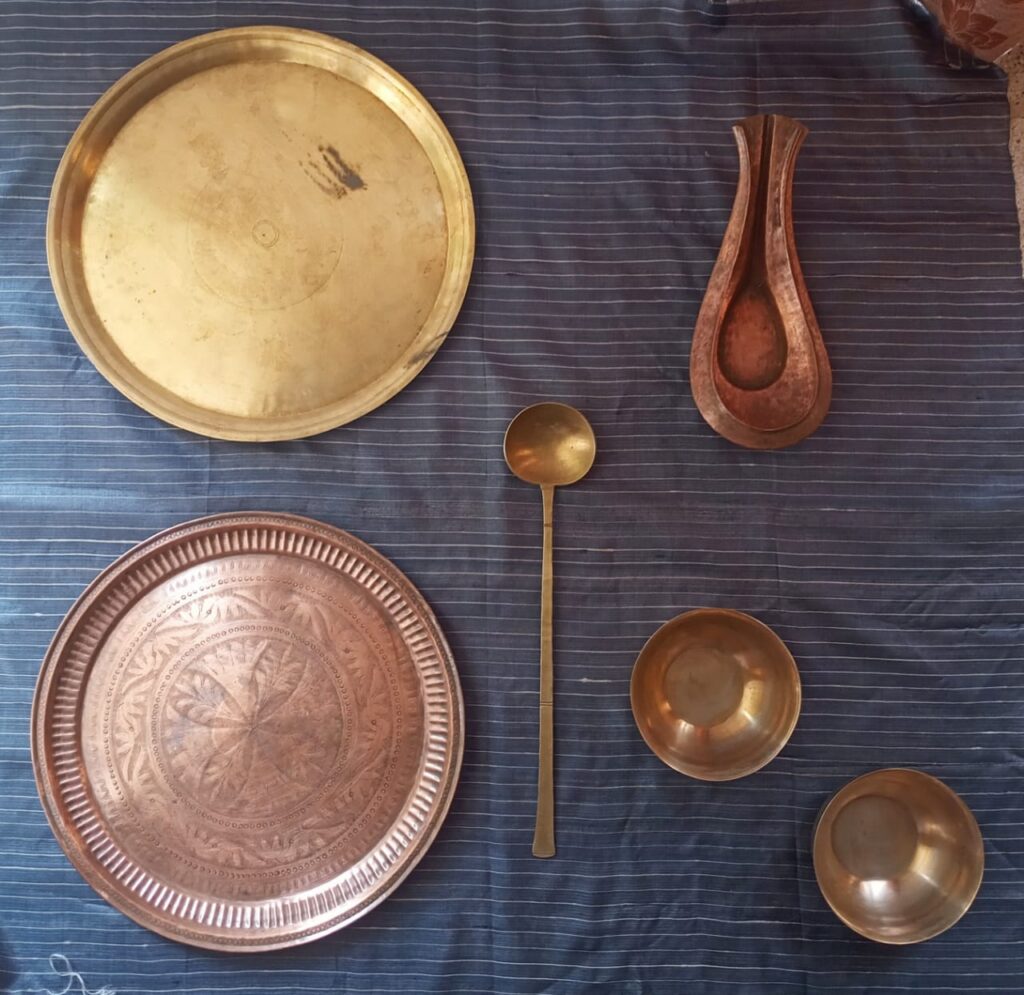TEXT AND PHOTOGRAPHS BY IPSA SAMADDAR
Kolkata, India
My great-grandmother, Mrinalini Moitra, was born in Gouripur in district Mymensingh, present day Bangladesh. She married into the Moitra family when she was only nine years old. Much of the ‘o-paar-Banglar golpo’, stories from the Bengal over the border, that have been passed down to my mother from my great-grandmother, lovingly called Didimoni, come from Khurshimul, where she lived after her marriage. Theirs was a life ringed by land and rivers, with most of the family income coming from their agricultural plot. Following her father-in-law’s death, Didimoni took up the mantle of finances and household, while my great-grandfather did small jobs on the side. The Dinga-pota, a tributary of the Dhanu River ran by their hut, swelling and flooding its banks in the monsoon, when tornadoes would rise on the horizon. In my mother’s stories, their life greatly resembles the shoshyo-shyamola, fertile green landscape of Bangladesh I’d read of in Bangla poems.
An integral part of their life there was the annual Durga Pujo, celebrated in the family since around 1910. Every year, the entire repertoire from bhog-ranna (cooking the bhog) to bhashan would keep the family busy, with relatives coming to visit and help them. While the week from Panchami to Dashami is the primary attraction of Pujo, someone always ran the show from behind the stage with cooking the bhog and decorating the house. In our family, this was Didimoni. The bhog preparation had to start at least a week before the festivities, beginning from bhog-er bajar (shopping for the bhog ingredients) to making the myriad dishes. That was the time of year when these utensils came out.
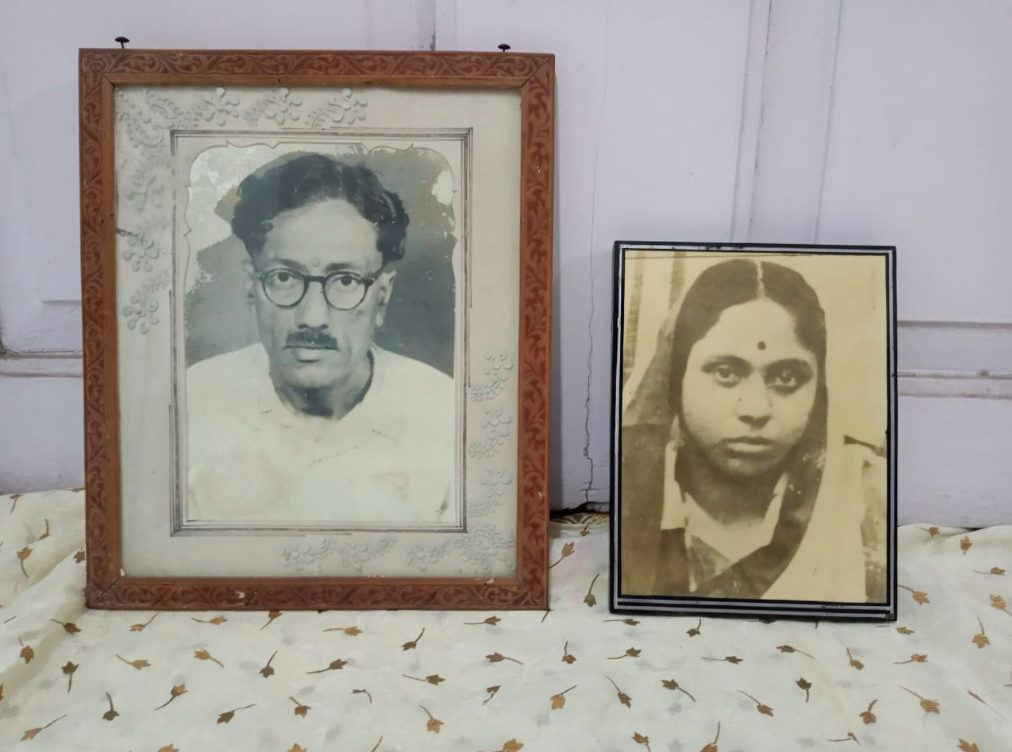

Made from brass, these were exclusively used for the Durga Pujo. Pictured are only 6 utensils out of a huge collection of rekabis or quarter-plates, bowls, ladles, jugs and other items. The large golden-hued plate is called a parat. Approximately 41 cm in diameter, the amish bhog, consisting of meat and fish, was placed on such parats. The long ladle or a haata is about 44cm long and was used for cooking khichuri. The brass bowls belong to a larger collection – islampuri baatis, they were used for storing the niramish or the vegetarian bhog. The engraved plate is an exception – made of copper, it is called a pushpo-patra, and is used to keep the flowers used for the pujo and anjali, an offering to the goddess. But my favourite has to be the kosha, which is one of a set called kosha-kushi. I’d only ever seen small kosha-kushis, such as the one pictured beside it, and this one’s nearly 33cm length had surprised me. Gangajal used in the pujo is stored in the kosha and sprinkled with the kushi.
There are several more utensils which would have once been filled with the dishes whose cooking Didimoni single-handedly presided over. Neither my mother nor I have inherited the range of her skills in preparing khichuri, aachar and most importantly, mishti. Heaps of sweets made from coconut, til and chhana or cheese curds, made patiently and lovingly by the women in the family, would fill the plates. Families from all over the village would attend the celebration, bringing offerings of animals to be sacrificed, and vegetables, for the pujo. After the festivities, the idol would be immersed into the river, and the utensils to their trunk. Never having seen a barir pujo – the pujo celebrated at home – or lived in a rural place, I would listen wide-eyed as Maa painted these verbal images before my eyes, like fairy tales.
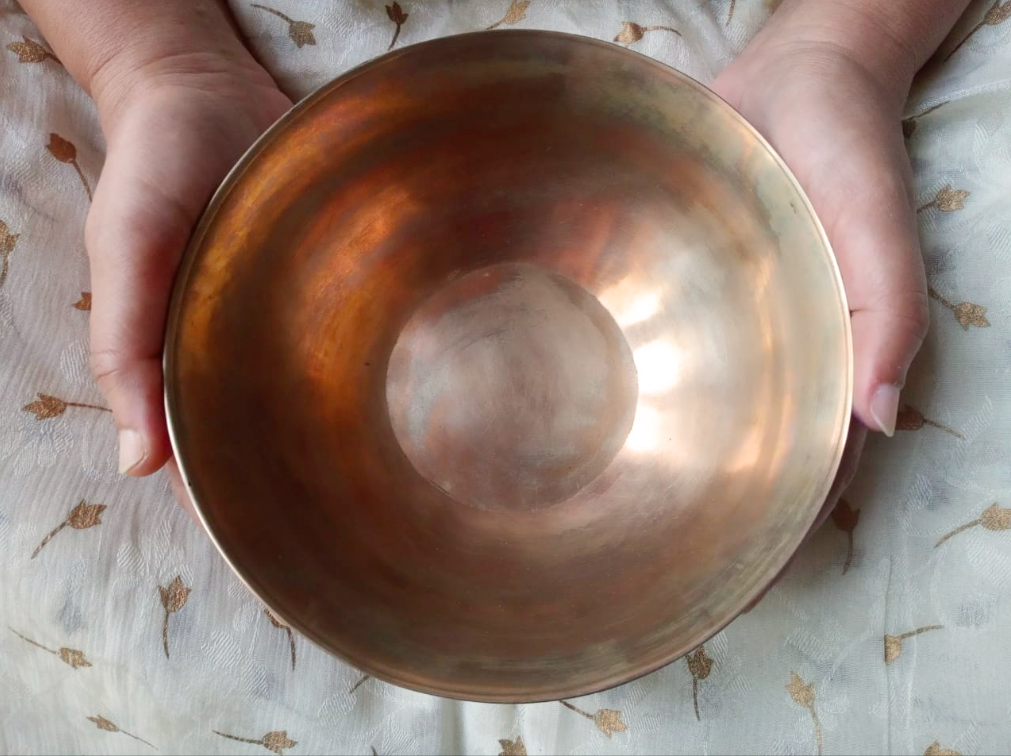
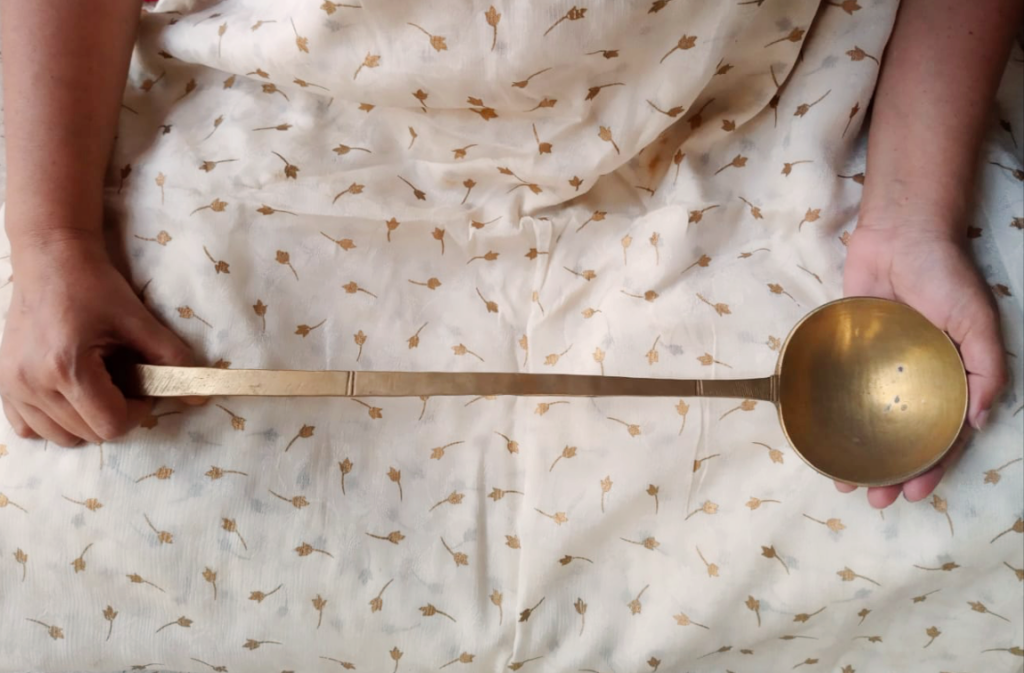
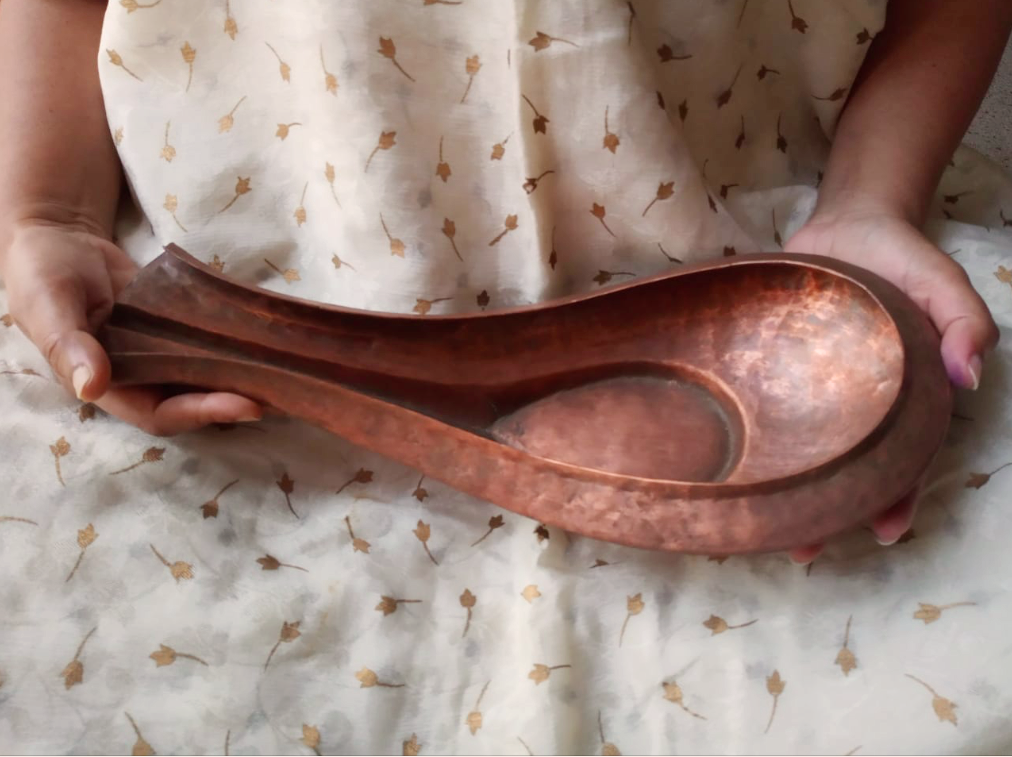
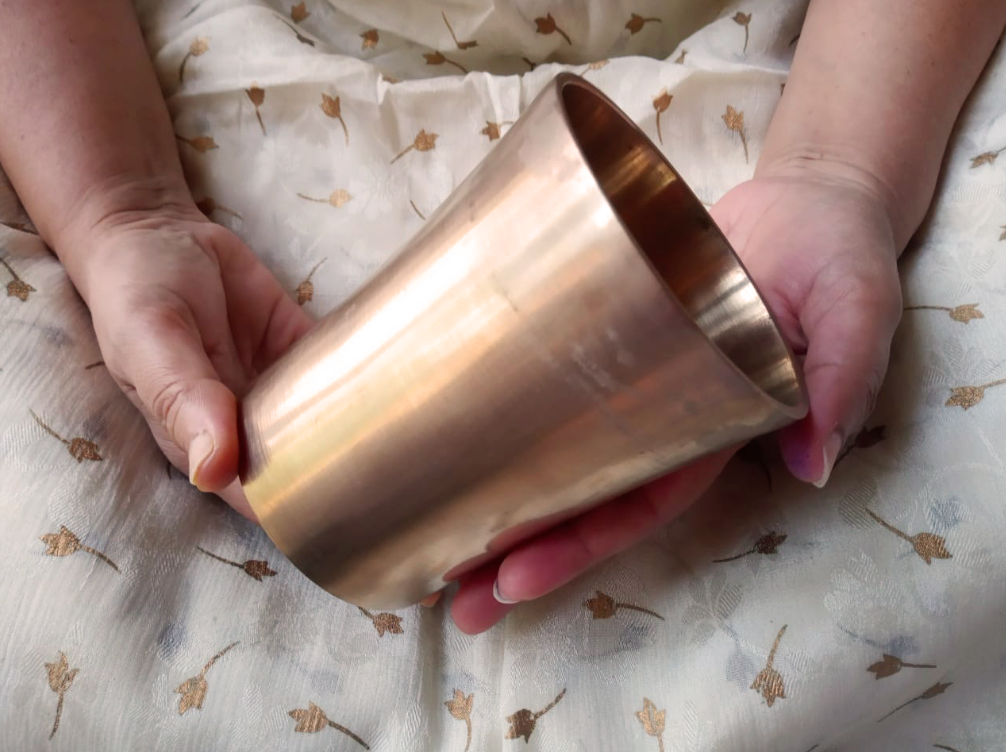
But everything came to a stop after 1947. Mymensingh had fortunately escaped the brunt of the violence, and the family had managed to stay on safely, unlike so many others. But by 1949, the village had seen a considerable exodus, and my grandfather knew that he would have to go to India if he wanted to get a job and support the family. So he boarded the train alone, in 1949, and started living with his cousins in Kolkata. Meanwhile, Didimoni continued to look after the finances and the household while they slipped into poverty, growing increasingly worried about how her children were faring on the other side of the border.
Always having been a practical woman, Didimoni read the situation and slowly began to realize that they wouldn’t be able to stay in Khurshimul forever. So she decided to begin transporting some valuables to Kolkata, to my grandfather. She did all of this alone because she could never trust my great-grandfather to be responsible, who indeed had decided to ignore the dangers, saying, “Ei dyash chhaira ami jaibam na. Eikhanei zonmaisi, eikhanei morbam, I’m not going to leave this country. I was born here, I will die here.” Making several trips, Didimoni singlehandedly began taking these utensils to Kolkata, packing sets into trunks which some of their servants would help her carry to the train station. She would always make the journey alone. Along the cross-border route, there was a checking point at Darshana station, where most belongings would be confiscated or thrown away from passengers. Somehow, Didimoni got her trunks past them. According to Maa, she would open her trunks and show everything she had to officials, saying these were for her children in Kolkata, and would be permitted. Eventually, in 1956, Didimoni unwittingly left Khurshimul for the last time. My grandfather stopped her from making the journey across anymore, despite her protests.
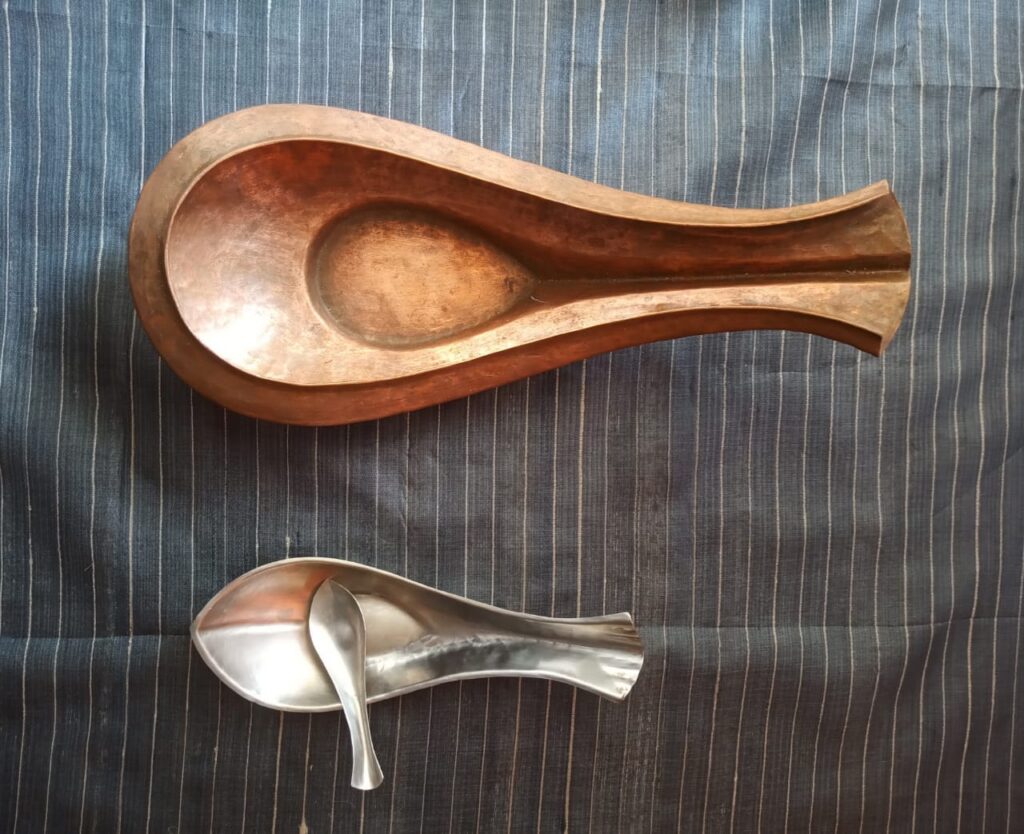
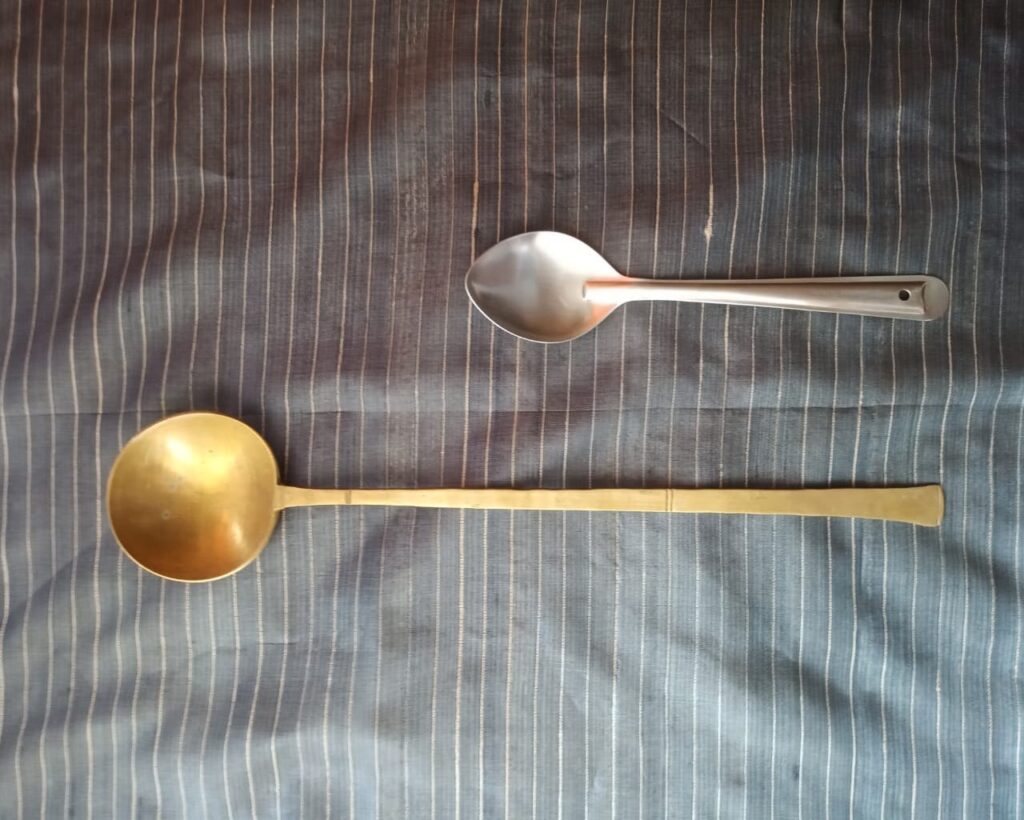
When my great-grandfather finally crossed over in 1969, and my grandparents had married and had Maa, the Durga Pujo resumed, now in Kolkata. The utensils were brought out once again, and my Didimoni made the bhog, helped this time by my mother. The Pujo happened annually until 2006, when Didimoni fell sick, and finally passed away in 2007. Always a strong pillar of support in the family, she holds the repute of a legend in the family for her stoic approach to any difficulty, no matter which side of the border. Only privately would she shed tears over the life she had left behind.
I was too young when the Durga Pujo celebrations stopped in the family. I have no memory of the festival, or of Didimoni, although I have baby pictures sitting in her lap. Like Khurshimul and the barir pujo, she too lives in my mother’s words, a brave woman I feel I’ve known all my life. The utensils lie in huge, dusty trunks in our store-room, receiving attention after several years for this essay. As I found myself struggling to lift a single pawrat, I wondered how Didimoni had lifted whole trunkfuls of these and admired her as I had done so often before. When I gaze at the utensils, I try to imagine the homely pujo, my Didimoni’s Khurshimul and her strong, loving hands. My grandfather doesn’t want to go back to the place he was born, afraid not of what he will find, but of what he won’t. But I try to hold on to this thread binding my family and the Partition, trying to understand how it affects my life and everything around me in ways maybe I don’t fully understand.
